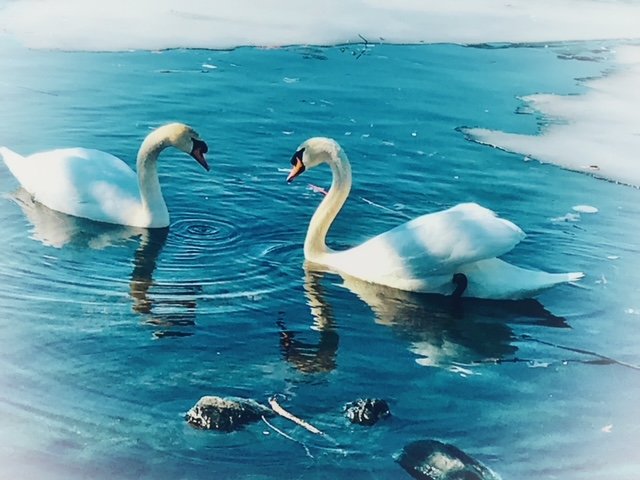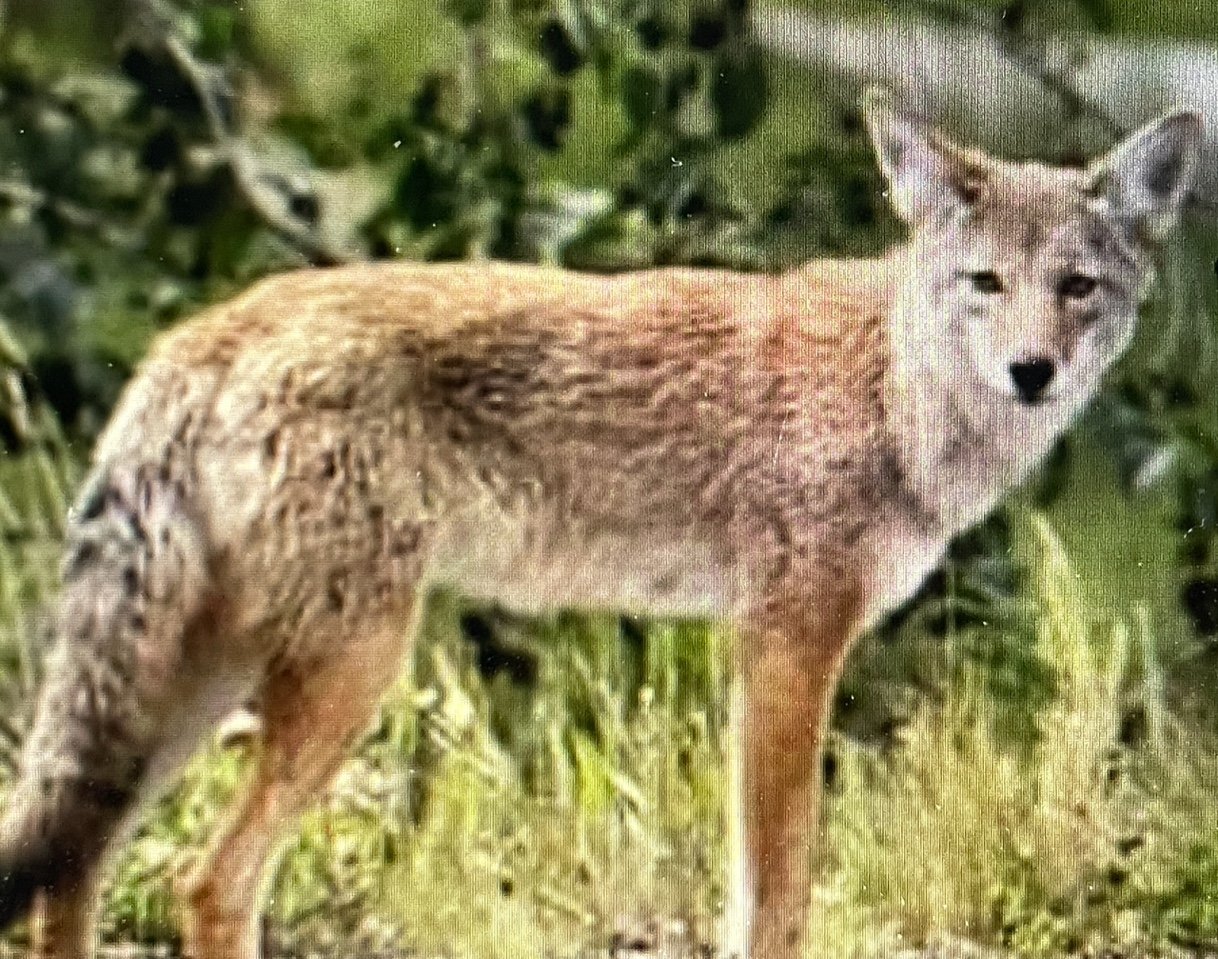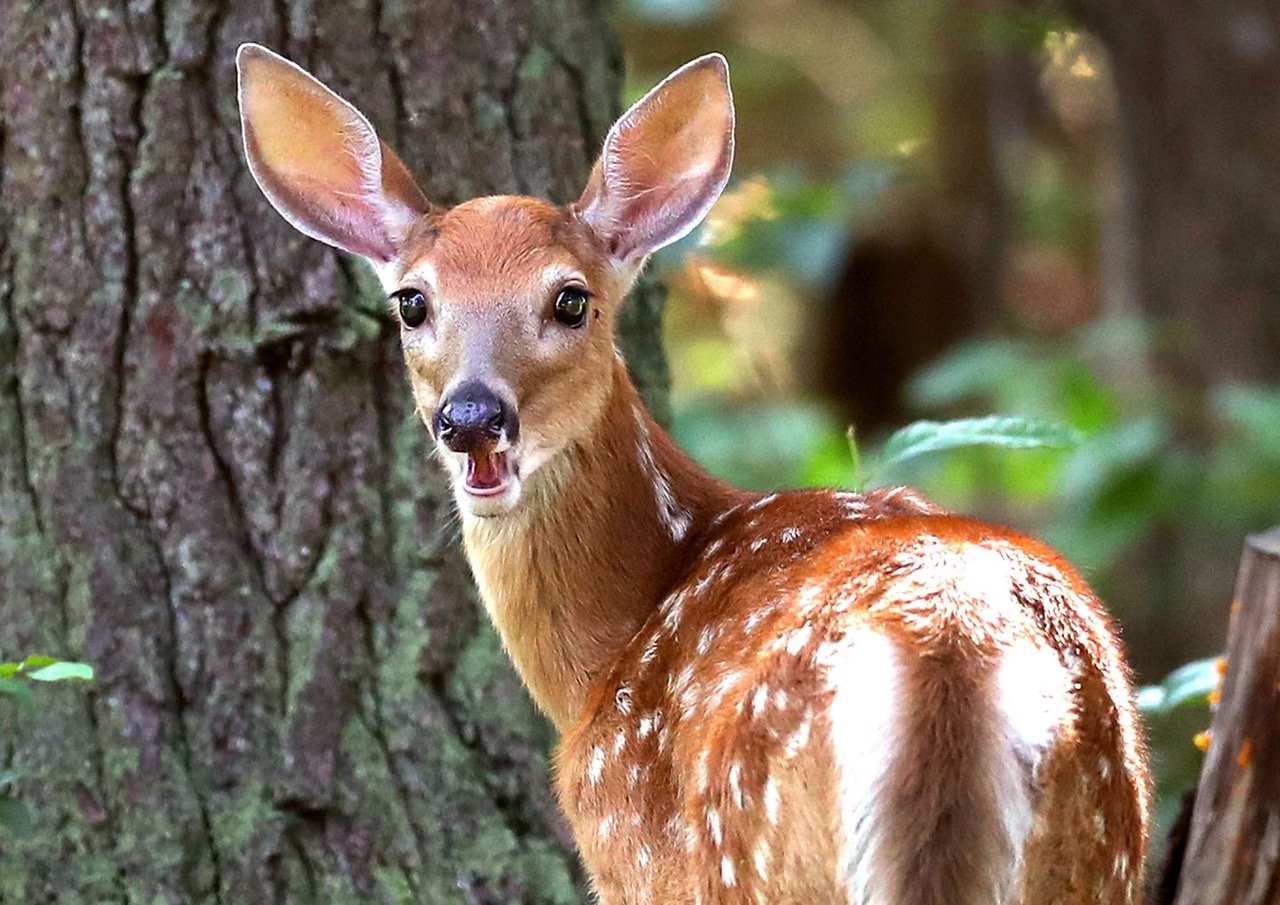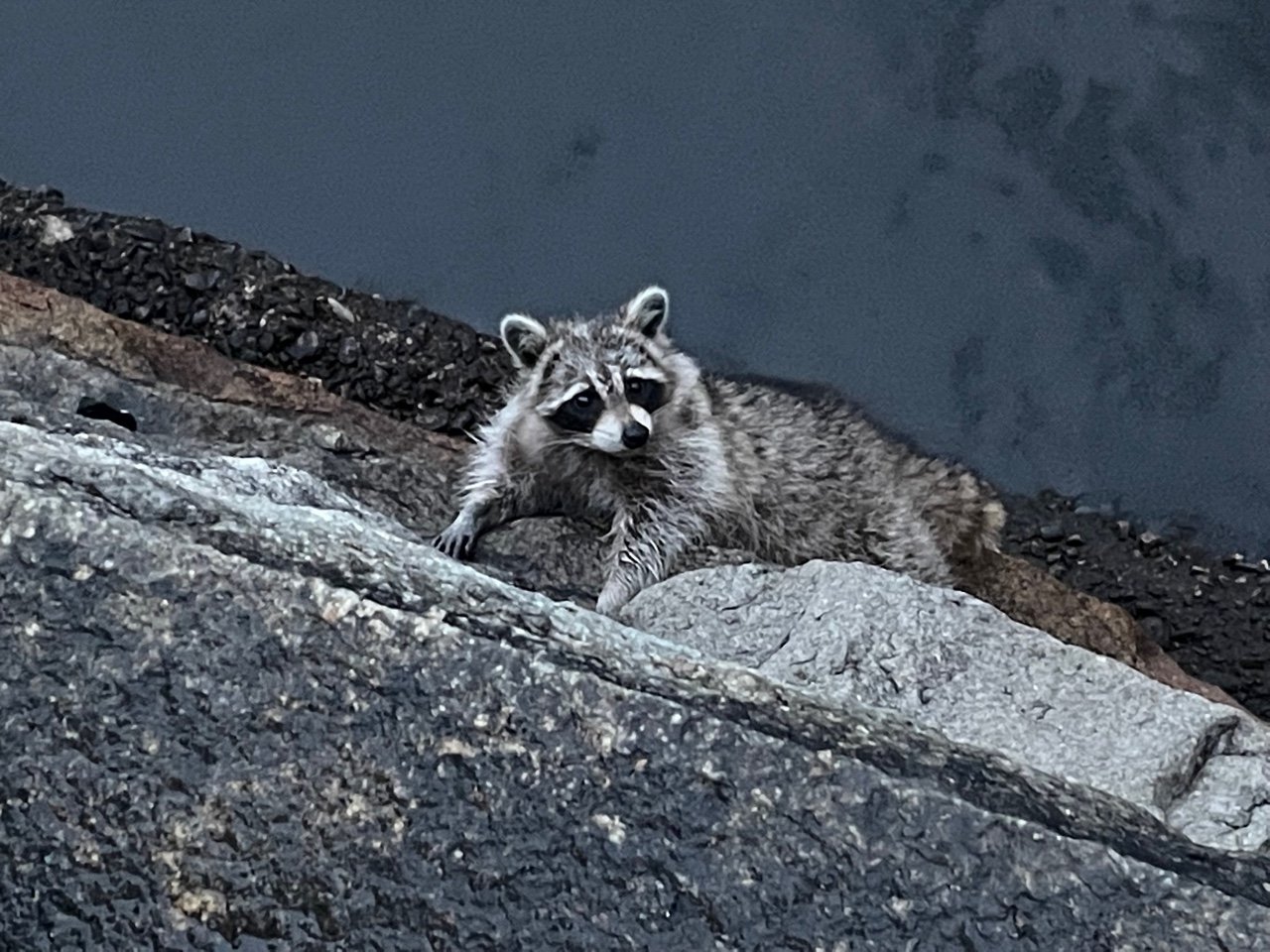Our Urban Wildlife:
Some we love, some we hate, some we eat, and some we don’t even notice.
Apologies to Hal Herzog author of Some we love, Some we hate and Some we eat, an exploration of our complicated relationships with animals particularly in our cities. Our patience is tested when, for example, those turkeys decide to guard the sidewalk where we’re walking. Or the Canada geese have left piles of poop for us to deal with. But those beautiful swans do brighten our day. Look at that cute little rabbit! Is one more worthy than the other?
As I pondered that and what Herzog had said, I decided that I needed to find out more about the wildlife in Cambridge: Who are they? Where are they? What are Cambridge’s policies regarding their management? So, I asked three experts: (1) Christina Correia, Director of the Cambridge Animal Commission; (2) Fresh Pond’s Ranger Tim Puopolo; and (3) Paul Kwiatkowski, Conservation and Sustainability Manager at the Mt. Auburn Cemetery. All responded quickly to my request, clearly enjoyed their jobs, and were happy to share their ideas about the people and animals they serve.
My first conversation was with Christina Correia, Director of the Cambridge Animal Commission. She has been with the Animal Commission for 22 years and “just loves this job.” She is a fifth-generation Cantabrigian who grew up on River Street and now lives on Putnam Street with her husband (also a Cantabrigian) and two daughters. She gave a “big picture” look at Cambridge and its wild and domesticated animals. Here is a summary of my discussion with her:
What wild animals live in Cambridge? What is the city’s perspective on its wildlife and how to deal with them?
Christina first emphasized that her department’s job is “not from a ‘pest control perspective’ but from a perspective of appreciating all wildlife and finding ways to co-exist with them.” The goals of the Animal Commission include appreciating the eco-system of all nature; co-existing with the urban wildlife, and facilitating programs for animal control and welfare in the city. Regular duties include: rescuing injured and/or sick domestic pets and wildlife; and maintaining Cambridge as a safe environment for people, pets, and other animals, through an educational and enforcement approach. “We often act as an ambulance, transporting sick, stray, injured or even the ‘too young’ who have fallen from trees, or gotten separated from their families.”
How do you deal with the animals, including pets and wild, that need to be rescued? Other services for pets?
Christina emphasizes that they couldn’t do their job without help of the terrific local vets, animal hospitals, shelters, and rescue organizations. “We’re so lucky to have such a great group to be on-call for us.” They also encourage responsible pet ownership, offer low-cost rabies clinic days, and run educational programs for adult and youth groups. The Commission issues 4,000 dog license annually: “We are a staff of five plus the director and we are the only Animal Commission in the state that has the job of issuing dog licenses; in the other counties they are offered by the Clerk’s Office.” We respond to barking dog complaints and enforce the leash law.” Christina added that there are 90 dog-play areas in Cambridge with some offering off-leash space. https://www.cambridgema.gov/cdd/parks/osplanning/offleash
There is also a program “Mayor’s Kids” that includes “kids who spend time with the Commission and love it when we have to keep some of the animals here temporarily.” She stresses that they are “not a nuisance removal or extermination service.” The Commission is allowed to respond to wildlife that needs help. The Department of Fisheries and Wildlife is responsible for rescuing coyotes, wild turkeys, and birds of prey. Christina then adds: “Can we do more? Sure, but Cambridge has some of the best services in the state.”
https://www.cambridgema.gov/Departments/animalcommission
Spring and Covid have increased our awareness of the local wildlife
First, spring is the busiest time of the year for wildlife. They are waking (“undenning”) from a winter’s nap, breeding, brooding, feeding, and protecting their young. And, yes, in Cambridge that means the skunks, sparrows, squirrels, geese, robins, coyotes, foxes, raccoons, rabbits, occasionally a bobcat, and even deer. And, of course, as Christina adds, more people (and their dogs) are coming out in the spring, especially after a season of Covid hibernation for some. (“We’re very busy this time of year.”) For others who have walked more during the pandemic, Covid has possibly changed their relationship to the outdoors and Cambridge wildlife. In fact, if it were not for the pandemic, some of us would never have visited our nearby green areas: North Point Park, Toomey Park, Esplanade River walk, and even some of the local “pocket parks” like our own Triangle Park that’s under construction right now. (Cambridge has many parks to explore and enjoy: https://www.cambridgema.gov/-/media/Files/CDD/ParksandOpenSpace/parksguide/20200113ParksGuide_FINAL.pdf )
My second conversation was with Fresh Pond’s Ranger Tim Puopolo. https://www.cambridgema.gov/Water/freshpondreservation He is a wildlife biologist and Park Ranger, who works closely tending to Fresh Pond’s wildlife and human/wildlife interactions.This means rescuing injured hawks and baby owls, helping mother turtles return to their egg-laying sites, keeping track of deer and coyote populations, and, of course, educating human visitors about wildlife and their interactions. (“Don’t let your dogs chase the deer!”)
What is Fresh Pond and why is it special?
Fresh Pond is a reservoir and park bordered by Fresh Pond Parkway, Huron Avenue, Grove Street, Blanchard Road, and Concord Avenue, a sanctuary of upland forests, meadows, wetlands, and wildlife on the western boundary of densely populated Cambridge. Prior to the Pond's use exclusively as a reservoir, its ice had been harvested. The Reservation consists of a 155-acre lake (even though it’s called a “Pond”) and 162 acres of surrounding land, with a beautiful 2.25-mile walk around the lake, popular with bird watchers, walkers, runners, and cyclists, and a nine-hole golf course.
Fresh Pond had a 2000 Master Plan; how has that affected humans and wildlife at the Reservation?
The Fresh Pond Reservation Master Plan created a comprehensive management plan and in the years since 2000 the meadows have been restored, the shoreline protected, indigenous plants returned, and wildlife has flourished. According to the vision of the 2000 plan: “The Fresh Pond Master Plan expresses the vital importance of protecting and enhancing both the water quality of the Fresh Pond Reservation and its open space and naturalistic character. The Plan embodies a vision and sets a framework for the preservation of water quality, recreational open spaces, natural green spaces, wildlife habitat, and a refuge from our hectic urban life.” https://www.cambridgema.gov/Water/freshpondreservation/aboutfreshpond/masterplandescription
What are your days like as the ranger at Fresh Pond?
Trained as a Wildlife Biologist, he says: “No day is ever the same. I’m out every day responding to the injured hawks, fallen baby birds, checking nest sites, observing the deer, muskrats, mink (although they are usually hidden), and, of course human and dog interactions with each other and the wildlife!”
Tim speaks of the wildlife as acquaintances. For example, he refers to the local raccoons as the “night crew—they arrive at the end of the day to clean up after everyone’s gone.” He’s very proud of the work done on the reservation to attract the wildlife. “There is so much wildlife diversity here because we’ve worked at creating and protecting the natural habitat. It’s also a wonderful refuge for humans. They both go together.” We planted 100% native plants, increased the greenspaces, preserved the water quality. His list includes (but is certainly not limited to) muskrats and minks, skunks, turtles (who are waking up now and looking for a sunny warm place to lay their eggs), coyotes, deer, great horned owls, bald eagles, hawks, many species of birds, and groundhogs/woodchucks. Tim knows the animals well and is proud of the work that time and effort that has been put into the lovely green space of Fresh Pond. It is a testament to the phrase, “Build it and they will come.”
The third person that I spoke with was Paul Kwiatkowski, the Conservation and Sustainability Manager at the Mt. Auburn Cemetery, a 175-acre urban green space in the middle of Cambridge. Paul is also the Project Leader for the Citizen Scientists’ Phenology and Microclimate Studies. He has been there since 1998; he came as an intern and was asked to stay. He has loved the job and all his years with Mt. Auburn.
Mt. Auburn Cemetery, in addition to being a beautiful cemetery, is a popular destination for birders, plant lovers, walkers, and those just wanting a peaceful place to escape from the noise of the city. It must be a challenge to meet all those needs?
Paul noted that a major job is continually striving to find a balance in the beautiful and popular space. that functions as an “active cemetery, botanical garden and arboretum, and a habitat for wildlife... We always try to make smart long- and short-term choices to reach that balance. And to help us with that we have volunteer Citizen Scientists and ongoing research projects. Our department focuses on the wildlife and, of course, that includes making decisions about plants and creating resilient habitats that provide cover, food, water, and breeding grounds for wildlife.” See the details of this and the “mini master plan” that “has identified broad initiatives that further Mt. Auburn’s commitment to protect and enhance and to more actively engage the public in its ongoing efforts” at https://mountauburn.org/category/wildlife/
What are some of the habitats and animals in Mt. Auburn Cemetery?
We have three ponds that we monitor regularly for water quality. We’ve built up the shorelines and planted good ground covers. We’ve had to make adaptations for the changing climate with the harder rainfalls and dry periods. For example, located at the edge of Willow Pond, “a rain garden was designed to slow the velocity of the storm water input into the pond and protect water quality.” Also listed in the Wildlife Action Plan, is the relatively new Washington Tower Wildlife Meadow that is a sunny area on the hilltop “surrounding the Washington Tower…replanted in 2015 with a diverse selection of herbaceous perennials, ornamental greases, and woody plants designed to attract pollinators such as butterflies, bees and hummingbirds.”
Paul notes that “we have permanent residents like squirrels, chipmunks, rabbits, ground hogs, and raccoons. Cycling through are the ‘transients,’ the red foxes, fishers, weasels, minks, and, this year, a river otter that may have traveled up here from the Charles River. This year we have a family of coyotes; they are the apex predators and there’s plenty of food for them here in the cemetery.” And, of course, there are the birds that migrate through here in the spring and fall and the ones who stay. “Each year, Mt. Auburn attracts multitudes of migratory and year-round resident birds who are attracted to this urban refuge by our wide-ranging horticultural collections.” Bird watchers from all over make sure that Mt. Auburn is on their travel plans. Paul did mention an example of a great horned owl nesting site eventually had to be cordoned off; the visitors were getting too close and were “stressing the nesting birds” so we had to give them some space. https://mountauburn.org/tag/birds-and-birding-at-mount-auburn/
What are the programs that you’d like our readers to know about.
Paul said that two of the programs he’s like us to be aware of are: (1) the Citizen Science Programs and (2) the collaborations with local researchers.
The Citizen Science Programs include several studies and a training program. The Phenology Study tasks the Citizen Scientists to “document their observations at specific locations throughout the Cemetery on a weekly basis… this helps us to get the ‘big picture’ about the plants that support bird populations and raise awareness of the issues in the local community.” The second study is the Micro-Climate (climate of a small defined area) Study which was initiated in 2017. The data collected will “help us make better plant selections for the Cemetery’s discrete micro-climates.” Continuing to attract and support the wildlife and humans! And now the Cemetery it is also a significant destination for biodiversity research of critical urban wildlife habitat.
The Citizen Scientist training program mission is to create a community of well-trained volunteers to support the field research. Paul welcomes all who are interested to check out the Citizen Science training programs whether or not they want to do field work. The 10 virtual classroom sessions are available to anyone interested and, if you are, contact Paul at pkwiatkowski@mountauburn.org The training program includes ten virtual classroom sessions covering flora and fauna, as well as field note taking, nature photography, history, informal educator training and the use of apps for crowd-sourced science. Again, you don’t commit to field work but just bring your curiosity and, as Paul said, “Just check things out! You are welcome.”
The other program that Paul is proud of is the ongoing collaboration with “a diverse group of local researchers,” including Leslie University, Harvard University, RISDI, local High School students, and Mass Audubon, further developing the Cemetery as a “living laboratory.” There are now interns functioning as Urban Ecology Field Assistants. Paul stresses that the field research is longitudinal; “How successful we are has to be geared to the long term ecology of this wonderful green space.”
For a more complete list see https://mountauburn.org/environmental-stewardship/
Here are some of the facts about our local urban wildlife from my conversations with Christina, Tim, and Paul.
More details about Cambridge wildlife
· Coyotes:
From Christina: There are coyote dens in Cambridge. In fact, the Commission was involved with moving a den of coyotes from the construction at North Point Park to a new riverside den along the river in Cambridge upstream from the lower basin. Coyotes, Christina says, are active dusk and dawn, usually have 4-8 pups in April/May; they’re “very opportunistic, adaptive, and rats are a favorite food.” They need a water source and often walk along the local railroad tracks.
From Tim: There are now two coyotes (male and female) in Fresh Pond Reservation. There will never be too many or too few coyotes in an area; they regulate themselves and have their own checks and balances. If there are too many, they will kill each others’ pups and have fewer births so there is always the right number is a specific area. They are in the dog family, not in the wolf family. They do not live in packs but in family groups made up of a mother and father, last years’ pup (teenagers) and the new pups. They are omnivores, not carnivores and eat berries and fruit in the summer and small animals in the winter.
From Paul: We have a family of coyotes this year at Mt. Auburn. They are not here every year but have found a good place to make a den. There is now a coyote researcher on the grounds who has set up wildlife cameras to track the coyote family’s movements.
· Deer:
From Christina: They mostly live around the Alewife/Route 2 area but do sometimes wander into the city and have been seen on River Street and Harvard Square. In fact, one was in Harvard Square last year. The Commission’s policy is “to leave them alone. One died of heat exhaustion on a warm summer day when it was chased by those who wanted pictures. One common injury to the deer is when they attempt to jump the old, ornate metal fences -- getting impaled on the spikes on the top of the fences. Just, please leave them and all wildlife alone!”
From Tim: Five female deer have returned from their “winter deer yards” gathering grounds a little farther north and more sheltered in the reservation. Two are pregnant and all look healthy. Each area has a “carrying capacity” —16 at the Reservation so “we’re not at that.” Unlike coyotes who have a “checks and balance system re: their numbers,” deer’s checks and balances are through predators, illness, hunters, or starvation. Right now the Reservation’s deer are at a good number and healthy.
· Rats:
From Christina: Rats have increased; three factors are responsible (1) construction; (2) more composting, which is great for the environment but does attract rats and other mammals without correct fencing or lids on cans; and (3) restaurant closings have decreased food supplies so they are searching farther afield. Christina says that the city has stepped up its response and it requires coordinated efforts with the DPW, Health Department, Inspectional Services, and cooperation of the general public to report problems or if you need assistance, email Rodents@cambridgema.gov or call 617-349-9760. And for more information about the program check out: https://www.cambridgema.gov/Services/Rodents
From Tim: Yes, there are rats here; Fresh Pond is the buffer between the urban world and our water supply. But they are also important to the ecosystem and he notes: “When life hands you rats, you have a food supply (for hawks, owls, coyotes, great blue herons)!”
· Bobcats:
From Christina: Yes there are bobcats in the area and have occasionally been seen. They are about twice the size of a house cat with a shortened tail. They are shy and rarely cause any problems for humans.
From Tim: We have not seen one here yet.
· Reptiles:
From Christina: Although reptiles requiring rescue have increased, these are not wildlife but have been pets. These include iguanas, snakes, and even bearded dragons. Either they have gotten loose or been let go by owners who bought them as pets and no longer can take care of them.
From Tim: About the turtles at the Reservation: there are the native ones, basking turtles, painted turtles, and, then, the invasive, the red ear slider that is the “pet store” turtle that people bought and, after years, realized they don’t want them anymore so, put them in the reservoir.
What are some tips and trivia for humans dealing with urban wildlife (from Tim)?
· Most likely time to have a coyote interaction is in November about 30 minutes after sunset. Coyotes look for food just around sunset and do not turn their clocks back so they are on the hunt then and, as Tim notes, that’s about the time people are walking with or without their dogs. He also stresses that coyotes are not aggressive, are shy, but just out doing their thing. It sometimes sets up a “perfect storm” with the dogs. People should also understand that small dogs are no different from coyotes’ normal food (rabbits and other small animals) so don’t let them out at night unsupervised.
· The most likely time to be “skunked” is in the fall when baby skunks are out and about and not yet understanding when to defend themselves so they will often spray indiscriminately!
· Raccoon poop is bad for dogs and if they eat any, they should go to the vet and, at least, be wormed.
· Baby birds fall out of nests; if they seem ok and in a protected spot, leave them alone. If they are in an open, non-protected area, put them under a bush or some other protected space. Their parents are watching and will find them via their chirping.
· Steer clear of the female snapping turtles who often wander around in the spring looking for a soft sunny place to lay their eggs. They only bite out of water and their bite is powerful so leave them alone and notify the ranger if they are near people and pets.
Special notes for Esplanade residents:
· Pigeons. Christina’s advice is to stop feeding them. Eliminate their food source! You are doing them no favors; they can’t learn to survive without humans and they can spread disease. Using obstacles so they can’t roost or camp out on the decks will help. Others have found that “birds-of-prey bobble heads” sometimes work. One of our neighbors recommended the Bird Deterrent Spike that can be found on Amazon https://www.amazon.com/Deterrent-Squirrel-Raccoon-Defender-Outside/dp/B09LH5NT5Y/ref=sr_1_2_sspa?crid=1UYBF04IDTO68&keywords=bird+spikes+for+pigeons+and+other+small+birds&qid=1648729280&sprefix=Bird+Spikes%2Caps%2C84&sr=8-2-spons&psc=1&spLa=ZW5jcnlwdGVkUXVhbGlmaWVyPUEyUEc5MVdKSTlGVUs4JmVuY3J5cHRlZElkPUEwMzUyMzIzVkY2RElDOU1ZVzI2JmVuY3J5cHRlZEFkSWQ9QTA4NDczNzgzME45QjRSUURGNkhLJndpZGdldE5hbWU9c3BfYXRmJmFjdGlvbj1jbGlja1JlZGlyZWN0JmRvTm90TG9nQ2xpY2s9dHJ1ZQ==
· The other side: Here’s another look at pigeons: “Why City Pigeons Are Worth Watching”
https://www.nytimes.com/2022/04/12/science/pigeons-facts.html?smid=em-share
· Duckings falling from above onto your deck at the Esplanade? In the spring (now!), those of us on the Charles River-side are the on the lookout for the mother mallard who annually builds her nest high up on one of our decks. The baby ducklings when ready jump from deck to deck to get down to the mother and the River. (Christina notes that mallard ducks usually nest in trees, high up, and the ducklings can fall several stories onto the woodland floor but not wooden deck or concrete.) Every spring some of us river-side see ducklings dropping down; some actually make it; some crash and die on the decks or sidewalks. Now we know whom to call — Christina at 617-349-4376. She says that if any of us spot mother mallard building a nest, please call her; they will move it and her young carefully, hopefully preventing the jumping (and sometimes dying) ducklings. BTW, Christina thinks it’s the same female mallard one every year. The Commission should also be called if we see mother-less ducklings in the Esplanade’s River entrance. (I guess she gets tired of waiting for them!)
Christina, Tim, and Paul were generous with their time and wonderful resources regarding Cambridge’s urban wildlife. To summarize what I’ve learned:
· Cambridge, a city of 120,000, is home to a variety of wildlife.
· Best approach to our urban wildlife is to appreciate them at a distance; leave them alone. Get educated about them (easy enough with the internet). They lead interesting lives.
· Problems with wildlife are usually human related. Our involvement often disturbs the natural ecosystem and upsets the delicate balance that urban wildlife are faced with.
· Look closely, observe, you never know what you’ll see. The young raccoon is climbing up the wall from the River in front of the Esplanade. (Picture by Fred Davis on an early morning dog walk in early April. Who was more surprised?)
· Enjoy, observe, appreciate, and get outside!
· Also, if you spot any wildlife, take a picture and send to us here at the ECG Update.
-- Jane Hilburt-Davis





